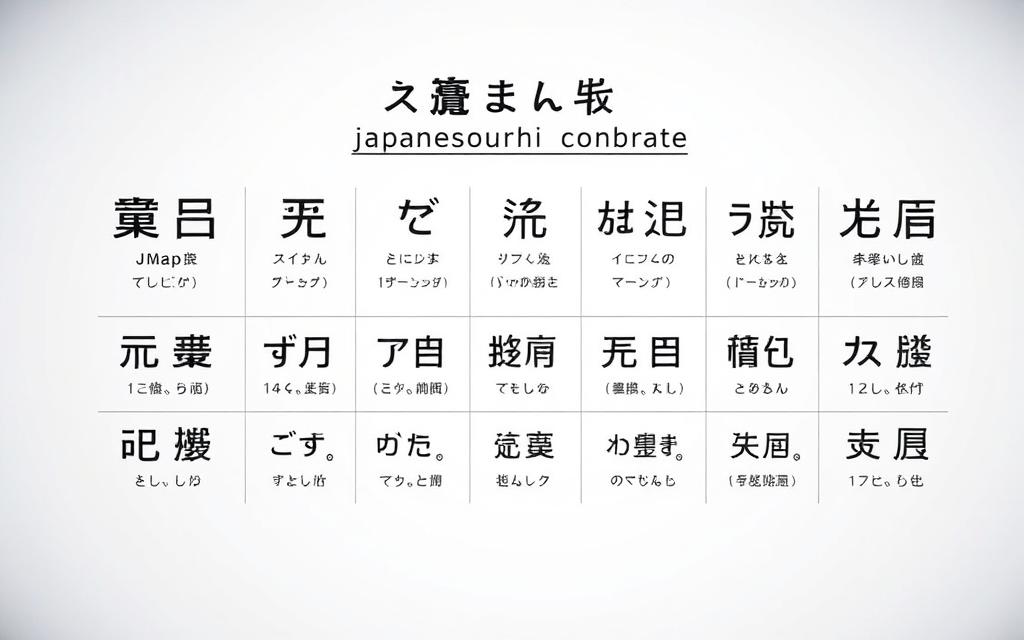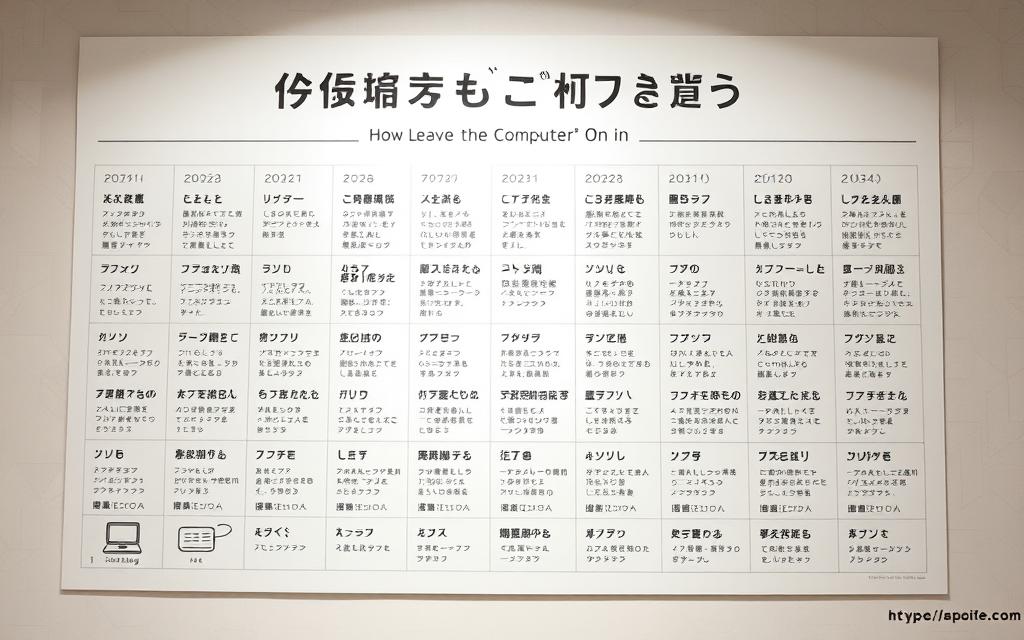Table of Contents
Understanding technical terms in Japanese has become essential for professionals and travelers. With Japan’s influence in technology, knowing workplace phrases ensures smooth communication.
A common scenario involves leaving devices running in office settings. On platforms like HiNative, learners often ask for accurate translations of such instructions.
This guide aims to bridge language gaps with precision. It provides authentic translations, pronunciation tips, and cultural context for tech-related requests.
Whether handling business tasks or navigating work environments, having the right vocabulary makes a difference. Discover formal and casual expressions tailored for professional needs.
The Japanese Phrase for “Leave the Computer On”
Tech professionals often need precise Japanese terms for device management. The phrase パソコンをつけたままにしておく (pasokon o tsuketa mama ni shite oku) translates to “leave the PC on.” It combines grammatical elements for clarity:
Direct Translation and Context
つけたまま means “left in a switched-on state,” while にしておく implies intentionality. Compare this to the casual つけっぱなしでいいよ (tsukeppanashi de ii yo), used among colleagues.
“Literal translations may sound unnatural. Always consider workplace hierarchy.”
Formal vs. Casual Usage
Politeness levels vary:
| Formal | Casual |
|---|---|
| おきっぱなしにしないでください (okippanashi ni shinaide kudasai) | つけっぱなしでいいよ (tsukeppanashi de ii yo) |
| “Please do not leave it on.” | “It’s fine to leave it on.” |
Related tech verbs include:
- ダウンロードする (download)
- 接続する (connect)
- 送信する (send)
Particles like を (direct object) and が (subject) alter meaning. For example, パソコンを置いてきた (left the computer) vs. パソコンがついたまま (computer remains on).
Pronunciation Guide for the Key Phrase
Tech terminology requires precise articulation for effective workplace interactions. The phrase パソコンをつけたままにしておいて contains subtle sounds that non-native speakers often mispronounce.

Breaking Down the Romanization
Each component demands attention:
- Pasokon (パソコン): Stress the first syllable – “PAH-so-kon”
- Tsuketa (つけた): The “tsu” combines “t” + “s” sounds quickly
- Mama ni (ままに): Equal stress on both “ma” syllables
- Shite oite (しておいて): Blend “shi-te o-i-te” smoothly
Common mistakes include shortening vowels in tsukeTA (should be 3 beats) or misplacing stress in oite (OH-ee-te).
Audio Examples and Tips
These techniques improve accuracy:
- Shadow native speakers using HiNative’s audio features
- Practice minimal pairs: つけた (left on) vs つけって (turn on)
- Record yourself with Rocket Record’s voice analysis
“Vowel length distinguishes tech terms like スリープ (sleep mode) from シャットダウン (shutdown). A slight error can cause confusion in professional settings.”
For challenging sounds like つ (tsu), position your tongue at the roof of your mouth. The mnemonic “Pasokon = PC + on” helps remember the full phrase.
In reports or writing, pronunciation impacts credibility. Many language learners overlook this when focusing solely on vocabulary.
Related Computer and Tech Vocabulary in Japanese
Mastering tech vocabulary in Japanese enhances efficiency in global workplaces. Professionals need accurate terms for device management and troubleshooting. This section covers essential power states and common office phrases.
Essential Terms for Power States
Understanding device power modes prevents workplace miscommunication. These terms appear frequently in office settings:
- スリープ状態 (suriipu joutai) – Sleep mode
- 休止状態 (kyuushi joutai) – Hibernation
- 電源オフ (dengen ofu) – Power off
Key verbs for device control include:
| Japanese | Meaning |
|---|---|
| 起動する | Boot up |
| 再起動する | Reboot |
| 更新する | Update |
Common Workplace Phrases
Technical support scenarios require specific vocabulary. These phrases help resolve common issues:
“エラーが表示されたら、すぐに報告してください”
(When an error appears, please report it immediately)
Katakana loanwords dominate tech discussions:
- ドライバ (driver) – Software driver
- ソフトウェア (software) – Applications
- ハードウェア (hardware) – Physical devices
Emergency terms every professional should know:
- フリーズした (frozen) – System crash
- バックアップを取る (back up) – Data protection
- 接続できない (connection failure) – Network issues
Cultural note: Japanese offices prefer パソコン (pasokon) over コンピュータ for personal computers. Maintenance requests often include:
- スキャンする (scan documents)
- プリントアウトする (print documents)
- 共有ドライブ (shared network drive)
Conclusion
Effective communication in tech environments requires precise vocabulary and cultural awareness. Mastering phrases like パソコンをつけたままにしておく ensures clarity in professional settings.
Formality levels matter when giving instructions. Use polite forms with superiors and casual versions with peers. Tools like HiNative offer real-time corrections from native speakers.
Boost retention with flashcards for tech terms. Practice daily using mock scenarios or roleplays. Resources like JTA glossaries provide industry-specific words.
Japan’s tech-forward workplaces value accuracy. Apply these skills during meetings or IT support tasks. Start practicing today to build confidence in professional conversations.
FAQ
What is the Japanese phrase for "leave the computer on"?
The most common phrase is 「コンピュータをつけたままにしておく」 (konpyūta o tsuketa mama ni shite oku). It directly translates to “keep the computer in the turned-on state.”
Is there a difference between formal and casual ways to say it?
Yes. In formal settings, use 「コンピュータを電源を入れたままにしてください」 (konpyūta o dengen o ireta mama ni shite kudasai). For casual speech, 「パソコンつけっぱなしでいいよ」 (pasokon tsukeppanashi de ii yo) works.
How do you pronounce the phrase correctly?
Break it down as “kon-pyuu-ta o tsu-ke-ta ma-ma ni shi-te o-ku.” Listen to native speakers on platforms like Forvo or YouTube for accurate intonation.
What are other useful tech-related terms in Japanese?
Key terms include 「電源」 (dengen, power), 「再起動」 (saikidō, restart), and 「スリープモード」 (surīpu mōdo, sleep mode). Workplace phrases like 「保存してください」 (hozon shite kudasai, “please save”) are also helpful.









